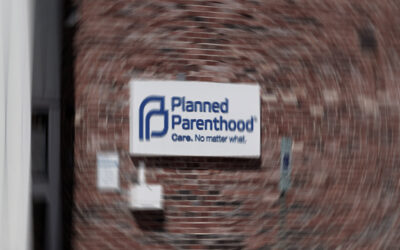Is the Abortion Pill the Same Thing as the Morning-After Pill?
The abortion pill can be easily confused with the so-called “morning-after pill,” or emergency contraception. The two are not used in the same way, though both can end the life of a preborn child.[i]
So-called emergency contraceptives include numerous drugs and devices used after sex, usually before a pregnancy can be confirmed, but potentially after a child has been conceived. Women generally use emergency contraception because they want to prevent a pregnancy from occurring.
The FDA label for Plan B, a popular morning-after pill, admits that the drug can end the life of a conceived child. Here’s what the label says about the drug’s “mechanism of action”:
Plan B One-Step is believed to act as an emergency contraceptive principally by preventing ovulation or fertilization (by altering tubal transport of sperm and/or ova). In addition, it may inhibit implantation (by altering the endometrium).[ii]
Plan B can end a preborn life by “inhibiting implantation,” meaning the drug does not allow the conceived child to implant into his or her mother’s womb, causing him or her to be expelled from her body.
The abortion pill is taken later, when a pregnancy can be confirmed. Unlike emergency contraception which can prevent fertilization or end a very early preborn life before pregnancy is confirmed, abortion pills are used to end an existing, confirmable pregnancy.
The primary drug known as “the abortion pill” is mifepristone (Mifeprex). It was created explicitly to kill a child that has already implanted in his or her mother’s womb. In the words of the U.S. Food and Drug Administration (FDA):
Mifeprex is indicated for the medical termination of intrauterine pregnancy through 49 days’ pregnancy.[iii]
Mifepristone acts to blocks progesterone going to the baby, starving him or her of necessary nutrients and killing the baby. Another drug, misoprostol is then taken to force the woman to have contractions and deliver her dead baby.
Ella (ulipristal) is another drug currently prescribed as a so-called emergency contraceptive, but which is in the same class of drugs as mifepristone, known as “progesterone receptor blockers.” Pro-abortion researchers looking to circumvent the cost of and limited access to mifepristone released a “proof of concept” study in January, 2025, with a protocol using Ella in place of mifepristone as an abortion pill regimen to end the life of a child up to 63 days old.[iv]
The abortion industry’s shift toward chemical methods cannot be overstated. Until recently, surgical abortion was the norm. Legal surgical abortions were carried out in abortion facilities that were subject to oversight.
Today, the lion’s share of children who die from abortion die by the abortion pill, which is available through the mail and is much more difficult to track or regulate. The pro-abortion Guttmacher Institute reports that the abortion pill accounted for 63% of U.S. abortions in 2023, killing approximately 642,700 preborn children.[v]
Emergency contraception and the abortion pill (mifepristone) are each known by many different names in popular culture. The following chart is includes some of the labels you may encounter:

This content is provided for informational purposes only. It should not be construed as medical advice or a replacement for consultation with a healthcare provider.
[i] https://aaplog.org/wp-content/uploads/2024/05/Committee-Opinion-7-updated.pdf
[ii] https://www.accessdata.fda.gov/drugsatfda_docs/label/2009/021998lbl.pdf
[iii] https://www.accessdata.fda.gov/drugsatfda_docs/label/2000/20687lbl.htm
[iv] https://evidence.nejm.org/doi/full/10.1056/EVIDoa2400209
[v] https://www.guttmacher.org/2024/03/medication-abortion-accounted-63-all-us-abortions-2023-increase-53-2020#:~:text=Medication%20Abortion%20Accounted%20for%2063,53%25%20in%202020%20%7C%20Guttmacher%20Institute





